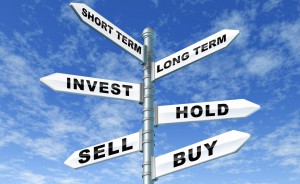How do I invest?
What approaches do I use and which strategies do I use?
Those questions were recently put to me by a journalist wanting to write a feature article.
He also asked what’s been the “secret” to my success of building a very substantial property portfolio.
So here’s what I said:
I explained that there is no “secret” but there is a strategy.
It was firstly to build my asset base through capital growth and then, once I’d built a substantial asset base, to move to the “cash flow” stage of investing.
Capital growth first, (build a substantial asset base of income-producing properties through capital growth and adding value) then cash flow.
I explained how my properties increasing value gave me equity for my next deposit and the proportionately greater rental growth helped pay the mortgage.
The next stage was to slowly lower the loan-to-value ratio (LVR) of my property portfolio and then to start living off my “cash machine” of properties.
You see…while cash flow management is important to keep you in the investment game, it’s really only capital growth that’ll get you out of the rat race.
A big mistake I see many investors make is chasing cash flow positive properties and never achieving a sufficiently large asset base.
I then explained that now that I have a very substantial asset base, I balance my higher growth residential properties with retail, industrial and commercial properties that deliver stronger cash flow but lower capital growth.
My top down approach
Over the years I’ve honed my property investment strategy to find that one per cent of properties that I like to call “investment grade” properties, – ones that are likely to grow at wealth producing rates of return.
I use what I call a “top-down approach” to my investment selection.
1. The Right Stage of the Economic Cycle
It starts with buying at the right stage of the economic and property cycle.
I look at the big picture – how’s the economy performing and where are we in the property cycle?
2. The Right State
Then I look for the right state in which to invest – one that’s in the right stage of its own property cycle.
While I’m not trying to time the cycle, I don’t want to buy right at the peak when I’ll have to wait longer for capital growth.
I only invest in our larger capital cities, where there are multiple pillars to the economy – because this is where economic growth and wages growth will occur.
3. The Right Suburb
Then within that state, I look for the right suburb – one with a long history of strong capital growth outperforming the averages.
I’ve found some suburbs have 50 to 100 per cent more capital growth than others over a 10-year period.
Obviously, these are the suburbs I target.
It’s all about demographics, as these suburbs tend to be areas where more owner-occupiers want to live because of lifestyle choices and where the locals will be prepared to, and can afford to, pay a premium to live because they have higher disposable incomes.
In general they’re the more affluent inner- and middle-ring suburbs of our big capital cities, so I check the census statistics to find suburbs where wages growth is above average.
While average Australian wages growth was around 20% over the last 5-year census period, I’ve found a number of regions where wages growth was double that.
It follows residents in these areas will have more disposable income to spend on upgrading the homes or buying new properties.
Then I check out the supply and demand ratio in the area to make sure there is not likely to be a short term oversupply of properties on the market.
Clearly my approach is very different to the speculative approach some investors adopt looking for the next “hot spot”.
They say things like, “Oh, this suburb hasn’t had much capital growth – maybe its time has come,” or, “That’s a brand-new suburb. They’re getting a train line down there so it must grow in value.”
4. The Right Location
Once my research has shown me the suburb to explore, I look for the right location within it.
Some livable streets will always outperform others and in those streets, some properties will always be more desirable than others and outperform as investments by increasing in value.
Think about the suburb where you live – there would be areas you’d happily live in and areas you would avoid, like on main roads or too close to shops, schools or commercial areas.
5. The Right Property
I search for the right property using my ‘5-Stranded Strategic Approach’ and finally I look for…
6. The Right Price
I’m not looking for a ‘cheap’ property (there will always be cheap properties around in secondary locations).
I’m looking for the right property at a good price.
I choose my properties in that order – a top down approach – which leads many people to ask why price is at the bottom of the list.
I guess this is because they’ve heard you make your money when you buy your property.
While that is correct, it’s not because you pay a cheap price or because you get a bargain.
You make your money when you buy because you buy the right property – one that will be in continual strong demand by both owner-occupiers (who push up property values) and tenants (who help you pay off your mortgage).
To ensure I buy an investment property that outperforms the market I use my…
5 Stranded Strategic Approach
1. I buy a property that would appeal to owner occupiers.
Not that I plan to sell my property, but because owner occupiers will buy similar properties pushing up local real estate values.
This will be particularly important in the current more mature stage of the property cycle where you don’t really want to “follow the crowd” of newbie property investors.
2. I would buy a property below its intrinsic value – that’s why I avoid new and off the plan properties, which come at a premium price.
3. In an area that has a long history of strong capital growth and that will continue to outperform the averages because of the demographics in the area.
4. This will be an area where more owner occupiers will want to live because of lifestyle choices and one where the locals will be prepared to, and can afford to, pay a premium price to live because they have higher disposable incomes.
5. I would look for a property with a twist – something unique, or special, different or scarce about the property, and finally…
6. I would buy a property where I can manufacture capital growth through refurbishment, renovations or redevelopment rather than waiting for the market to deliver me capital growth.
By following my 5 Stranded Strategic Approach, I minimise my risks and maximise my upside.
Each strand represents a way of making money from property and combining all five is a powerful way of putting the odds in my favour. If one strand lets me down, I have three or four others supporting my property’s performance.
It doesn’t end there…
While most investors just buy a property and hold it for the long term, strategic investors regularly review their investment portfolio’s performance.
When I ask investors how their properties are performing they usually have no idea.
They’ve just closed their eyes, crossed their fingers and hoped for the best.
It makes no sense to invest in a property and then not review its performance every year or so.
I like to look at my property portfolio’s performance at least once a year.
Are my properties performing to my expectations?
Are they outperforming the market?
If that property were for sale today would I buy it again?
Does this property still fit in with my overall plan?
This is also the time to assess how our shifting markets will affect your property portfolio.
What would happen to your position if interest rates were to rise 1% or 2%?
Because in due course they will.
It’s also the time to assess your Loan to Value ratio and your cash flow to see if you can afford to buy another property or two.
Over time you grow, your skills improve and your circumstances change, so treat your property investments like a business and evaluate your assets dispassionately.
No secret
So as I said earlier – there is no secret to property investment success, just a strategy.
While most investors read a book or two, do a little research and then buy one of the first properties they come across, strategic investors are smarter than that.
They follow a system that is rooted in the real world and has stood the test of time in changing markets.
So now you know the “secret”, what will you do with it?
If you want to take advantage of the opportunities our growing property markets will offer, now is a good time to consider your options.
If you’re looking for independent advice, no one can help you quite like the independent property investment strategists at Metropole.
Remember the multi award winning team of property investment strategists at Metropole have no properties to sell, so their advice is unbiased.
Whether you are a beginner or a seasoned property investor, we would love to help you formulate an investment strategy or do a review of your existing portfolio, and help you take your property investment to the next level.
Please click here to organise a time for a chat. Or call us on 1300 20 30 30.
When you attend our offices in Melbourne, Sydney or Brisbane you will receive a free copy of my latest 2 x DVD program Building Wealth through Property Investment in the new Economy valued at $49.






No comments:
Post a Comment